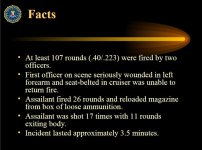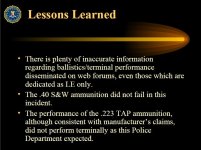cannonfire
New member
I know it doesn't actually mean that but I have a friend who seems like he knows what he's talking about when it comes to guns. His father and he collect guns together, which I know that doesn't mean anything but he is a pretty intelligent kid.
When I told him that I bought a Springfield XD .40, he made fun of me calling it 'Short & Weak'. He went on to explain how the FBI created the .40 s&w because the 10mm round was too strong for the MAJORITY (not all, not trying to **** anyone off here) of female agents.
Does anyone know if that is true or not? or is he just talking crap?
And which is a more powerful round anyway? 10mm or .40?
When I told him that I bought a Springfield XD .40, he made fun of me calling it 'Short & Weak'. He went on to explain how the FBI created the .40 s&w because the 10mm round was too strong for the MAJORITY (not all, not trying to **** anyone off here) of female agents.
Does anyone know if that is true or not? or is he just talking crap?
And which is a more powerful round anyway? 10mm or .40?



